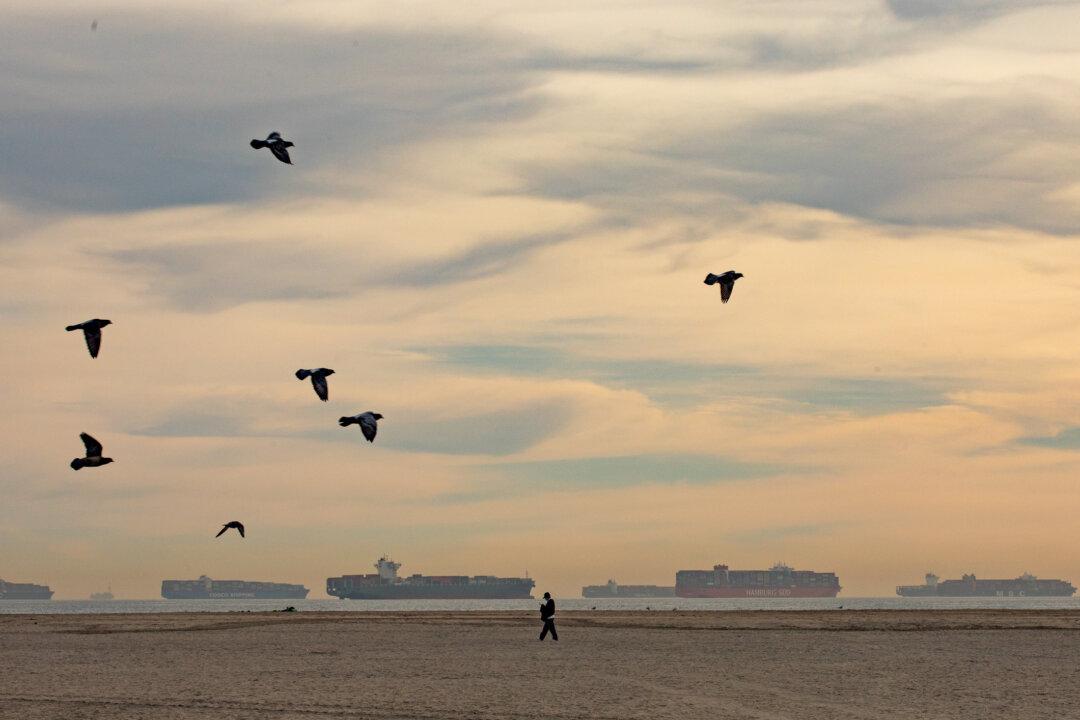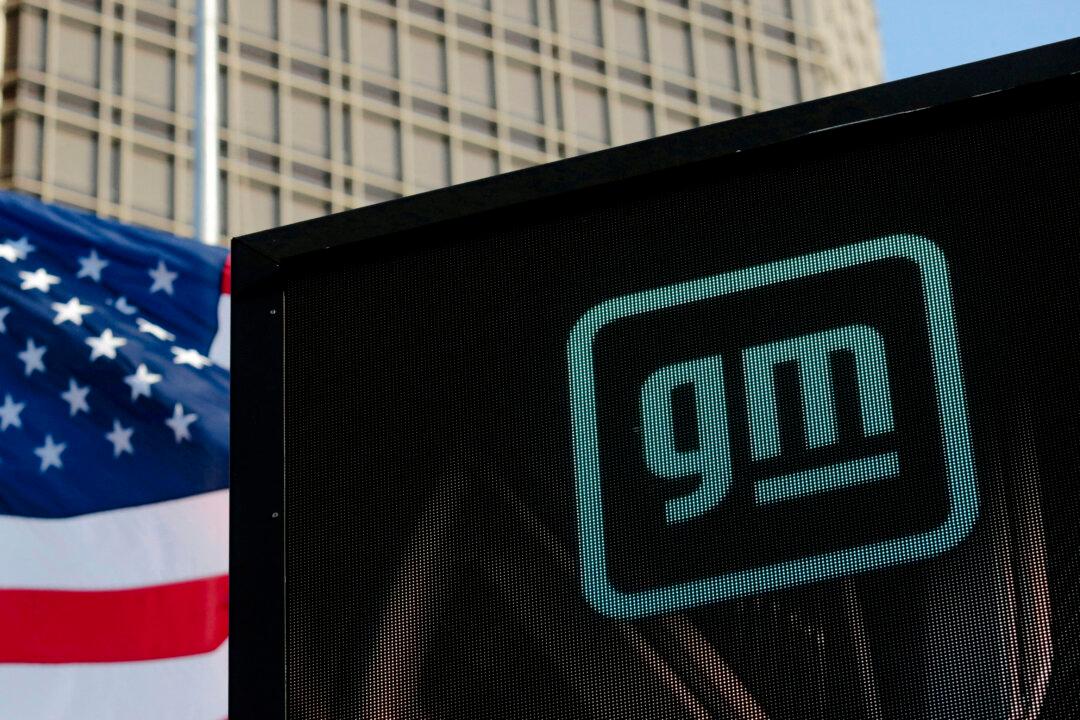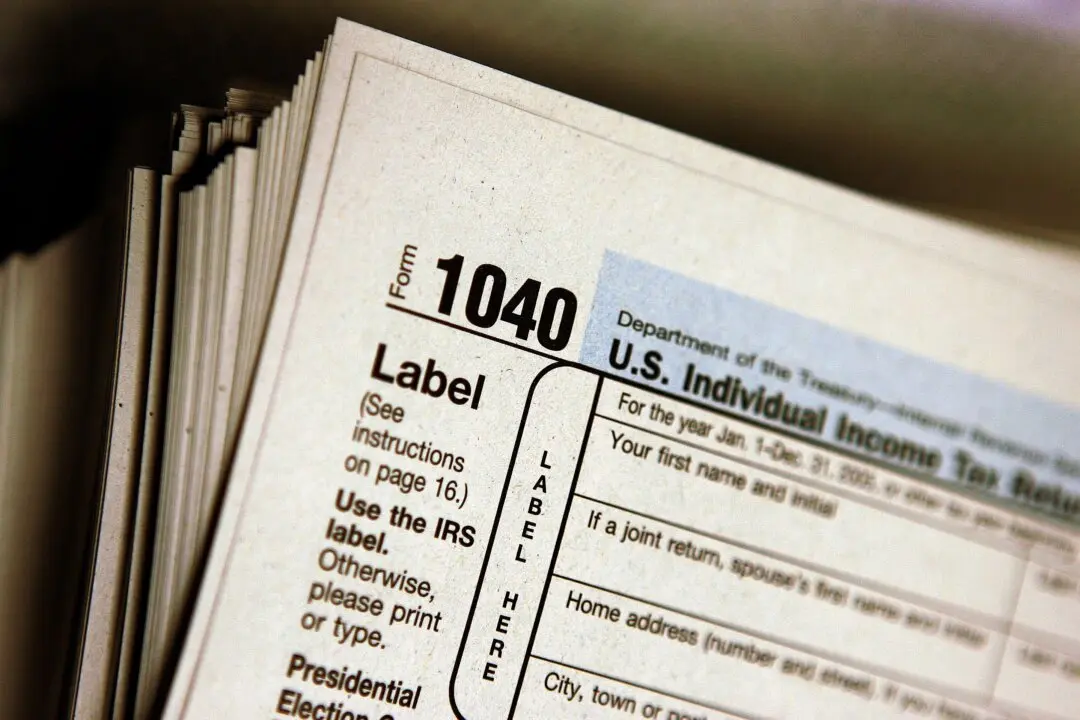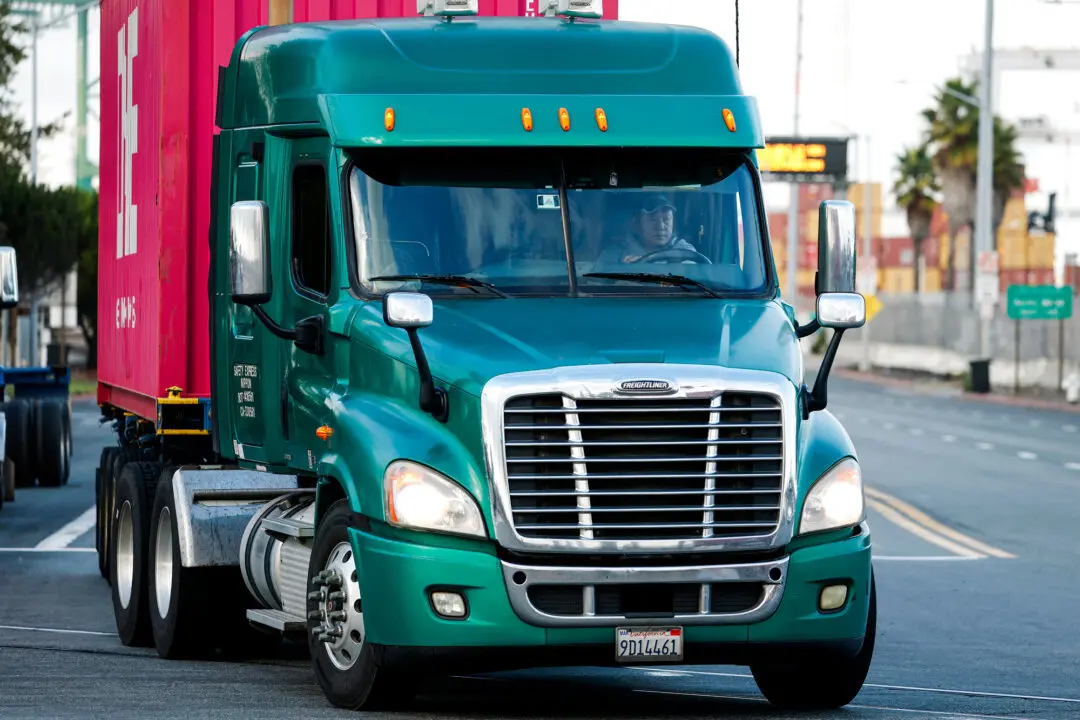A new queuing system designed for the Los Angeles and Long Beach ports has reduced the number of cargo ships idling near the California coast, marine officials reported Nov. 22.
The program is designed to reduce the number of ships “loitering,” or using their own diesel engines to idle unanchored, off the coast or anchored near the ports, Kip Louttit, head of the Marine Exchange of Southern California told The Epoch Times.





